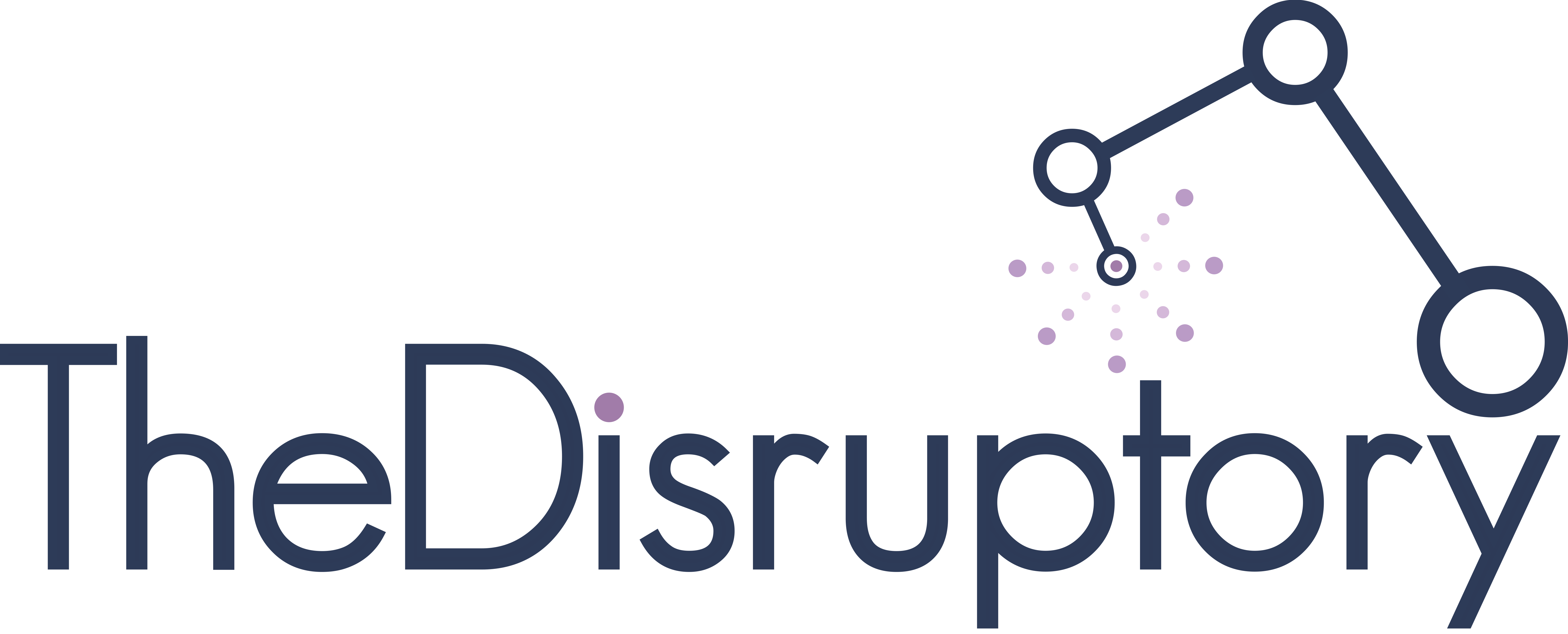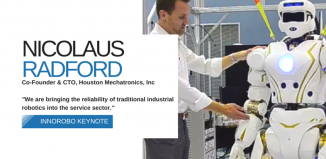European Startups: What strategy for growth?
By Jérôme Chifflet
European Startups
What strategy for growth?
“Molecular startup model”
Abstract
Many growth acceleration models for digital start-ups can be found in the literature. Among them, a noticeable one is the Monopoly scheme strategy by Peter Thiel “Zero to one” theory[1]. It basically claims that in order to succeed you must stay in a monopoly situation as long as you can. One way to achieve this strategy is to follow the digital Highway model by Julie Meyer that explains that “David must dance with Goliath”[2] : essentially, the start-up (David) must use the worldwide distribution network and world scale footprint of the large company (Goliath) to scale up its business.
The underlying philosophy is to conquer the broadest possible customer basis in a short period of time. Meyer’s model clearly shows the accelerator component in the typical large company distribution channel. The point is then: how to apply Thiel’s approach in a fragmented market? For example, operating Meyer’s approach becomes a tricky game in the European market. Indeed, a European start-up must tackle simultaneously two challenges, first overcome several hurdles (language, regulation, legal and cultural issues…) and secondly that must be done in limited time scale.
In this paper we propose a growth model for start-ups which guarantees a sustainable growth in a fragmented market in a reasonable time scale: the molecular start-up model.”
What is really new in the old continent?
In 2014 during the SLUSH event[3], Nicolas Brusson Bla Bla Car COO and co-founder asked the question, “is Europe a big enough ocean?”. This is an important question for each European entrepreneur, so let’s consider some global figures regarding this market versus US markets. People: 743 versus 326 Million people for USA; GDP: 17.3 trillion $ for Europe versus 16.8 trillion $ for US and more over 100 biggest companies in the world 30 are European and 40 are American… BUT regarding Technological companies EU owns Europe capture only 4 % of the market capitalization versus 79% for US…. which is a real paradox when we know the number and the qualities of research centers and the prestigious Universities’ that she counts. Finally he sets cleary the problem: “how do you address Europe as a single Market? Or in another way: How do we build a European Company?
After recalling the specificities of our old continent and some rules that a promising startup should follow to become successful we propose some growth strategy which hold the European constraints and fix the fragmentation issues.
Beyond the geographical and demographic differences, Europe is a juxtaposition of culture, education, tax and regulation systems which constrain each entrepreneur — from a collective entrepreneurship in Nordic countries [4] including Germany, to individual entrepreneurs cult and failures aversion in France.
This puzzle is the playground of each entrepreneur, and she/he must take into account to build her/his growth strategy.
One consequence is the drain to other continents such as the United States, China, and Asia…or at least the tendency to move your headquarter to California and leave your R&D resources in Europe (Symantec, tbc).
This situation is no better for Venture Capitalists who suffer from the same situation with a set of promising startups stuck in their native countries trying to expand their business to their European neighbors.
Whatever the angle you take to fix the problem, as an investor or entrepreneur you reach the same conclusion, how to address a 700 M€ market fragmented in 27 pieces and define a sustainable growth strategy?
Peter Thiel one of the founders of PayPal with Elon Musk explains in “Zero to One” that to have a chance to survive or grow in a sustainable way you must stay in monopoly on you market. What does it mean in a European context?
We have seen all the differences which divide this territory but we also share some common things the scientific and technical content in our universities and more or less a European life style (compare to middle east or Asia). This means that our entrepreneurs have the same scientific and technical background and very close brains in other words can generate the same ideas.
This is also why Nicolas Brusson, BLABLA Car COO found pretty quickly clones of his company in the close country of France and in Italy, and wisely decided to convince his neighbors to merge their companies with his. This took him nine months which represents a century at the startup time scale.
We already knew that M&A scheme was an efficient growth model but not applicable for startup!
From this, we learn two things; we can growth without money and the best way to growth is not to buy another company but to convince another entrepreneur to joint you …with her/his company. We build a company as we build a molecule by aggregation of atoms.
But we see immediately the problem generated by this approach as we ask entrepreneurs (at least at one over two) to give up her/his baby…which is somewhere against their DNA….
Another very interesting thing is what large structures face while implementing their innovation strategy especially with disruptive technologies. Some of them have identified this issue for a long time by creating an Open innovation structure but the gap between these two words seems wider than expected. Clayton M. Christensen [5] shows that in case of disruptive technologies only the early players can expect to win at the end of the game. What is the consequence for the large established companies?
The disruptive technologies market does not fit with the large company’s requirement as growth constraints and expectations. One of the ways to tackle this challenge is either to create a spin-off for the technology or to acquire startups in the appropriate domain as Christensen prove.
The molecular extension scheme:
Let’s take a project based on a cutting edge technology application (atom) in one of the European country. What is the probability to find the same or related project in one other of the 27 countries? I refuse to believe that this probability is zero. Assuming that we are in this case, we can call the “valence” of the project or the valence of atom the number of other projects (atoms) compatible (that can address the same market segment).
The idea is to build the best molecule as an aggregation of compatibles atoms.
This molecule has at least two interesting properties, first it can grow simultaneously in each country it has an atom and second it is more difficult to duplicate or copy it.
Definition:
We call a molecular startup; a company built on the previous model, that is to say, a company built as an aggregation of two or more companies or startups addressing the same market and whose combination products or services deliver a consistent product or service. The simplest model is when you aggregate the same product or service in each country as Bla Bla car.
Advantages of a molecular scheme
Mainly three consequences:
- Geographical extension in several countries simultaneously in a short period of time which strengthens your monopoly position
- Make your product or service less duplicable or too expensive to do it
- Speed up your growth by parallelizing the process
Why must entrepreneurs speed up their growth?
For the above characteristic of common education, scientific maturity and academic network… it is pretty clear that the probability to find the same ideas in several European countries of Europe is quite high, a fortiori if the entry barriers are low.
How should entrepreneurs achieve this task?
- Build an allies ecosystem
According to European market structure and to overcome the fragmentation barriers start-ups have two mains solutions. First sign a deal with Goliath whose structure and footprint make a worldwide framework to distribute their product or second approach build a molecular extension scheme.
The first step of the molecular extension scheme is to identify your allies. It’s a 3D space: Technical, Marketing and financial.
- Technical allies
This axis concerns only start-ups with a technological asset and even if it’s often the easiest axis to deep dive for the entrepreneur you have to keep in mind that there is always a technological barriers which can lock your product or a new technology which can boost your product.
- Industrial allies
This axis is usually underestimated because the first reaction of the entrepreneur is to divide the world between Customers and competitors but this Manichean approach can cost you a lot. Another classical mistake is to only look for large companies as partner expecting that it will become sooner or later your customer. The paradox is that your better ally may be your first competitor or the company you see as an enemy. But unless this company makes the same product in the same street most of the time, its size and its location is not a menace to your business…on a short time base. The question is how can you identify this ally?
Some tracks are: Use European organisations as EIT[6], EBN[7] or ECG[8]…
- Financial allies
After having done the first two steps, you have built a “Molecular start-up” each component or atom, being a start-up or SME in another European country which can allow you to parallelize your growth in several places on a short time period. Therefore you will be able to run the third one by providing investors with a sustainable growth scheme on a fragmented market such as Europe.
According to the maturity stage and your financial capacities you must deep dive in your potential allies ecosystem having always in mind to keep a realistic product/market fit.
Conclusion
This approach came from five years of experience, when I supported European start-ups at EIT Digital one of the first European accelerators launched by the European Commission in 2010. So many times, I encountered the same project, the same start-up in almost all of the European incubators and accelerators of each country that it was clear that the classical growth model based on geographical extension country by country or the silo approach could be improved. The European David always has the choice to dance with Goliath or to find another David to sustain her/his growth….
[1] Zero to One “Note on startups, or How to build the future” Peter Thiel 2014
[2] http://www.entrepreneurcountryglobal.com/united-kingdom/ecosystem-economics/item/chapter-4-david-and-goliath-must-dance
[3] tech.eu/event/slush–2014-helsinki-finland/
[5] “Innovators Dilemma” Harvard Business review Press
[6] European Institute of Innovation and Technology www.eitdigital.eu
[7] European Business Innovation Center ebn.be
[8] www.entrepreneurcountryglobal.com
About Jérôme Chifflet
Head of screening committee
Sophia Business Angels
300 route des Crêtes
06650 Sophia Antipolis
Jérôme Chifflet, is former entrepreneur, researcher, it was acting Head of Access to Finance Activity within EIT Digital (European Institute of Innovation and Technology) till 2015. He has extensive research background, including over 20 years in various positions ranging from Orange Labs research Manager to deputy research Director. Jerome also yields significant entrepreneurship expertise, having founded and managed Waidan as CEO from 2000 to 2004. Over the last five years within at EIT Digital, he acted as Business Development director for France before being appointed to Head Access to finance across Europe. He also belongs to several Investment committees (PACA Investments, Sophia Business Angels) and Incubators (PACA –EST; Telecom Paris Tech incubators). In addition, Jerome is also member of the Telecom Paris research council and he was member of the editorial board of the Telecom System, international ICT review for many years.







